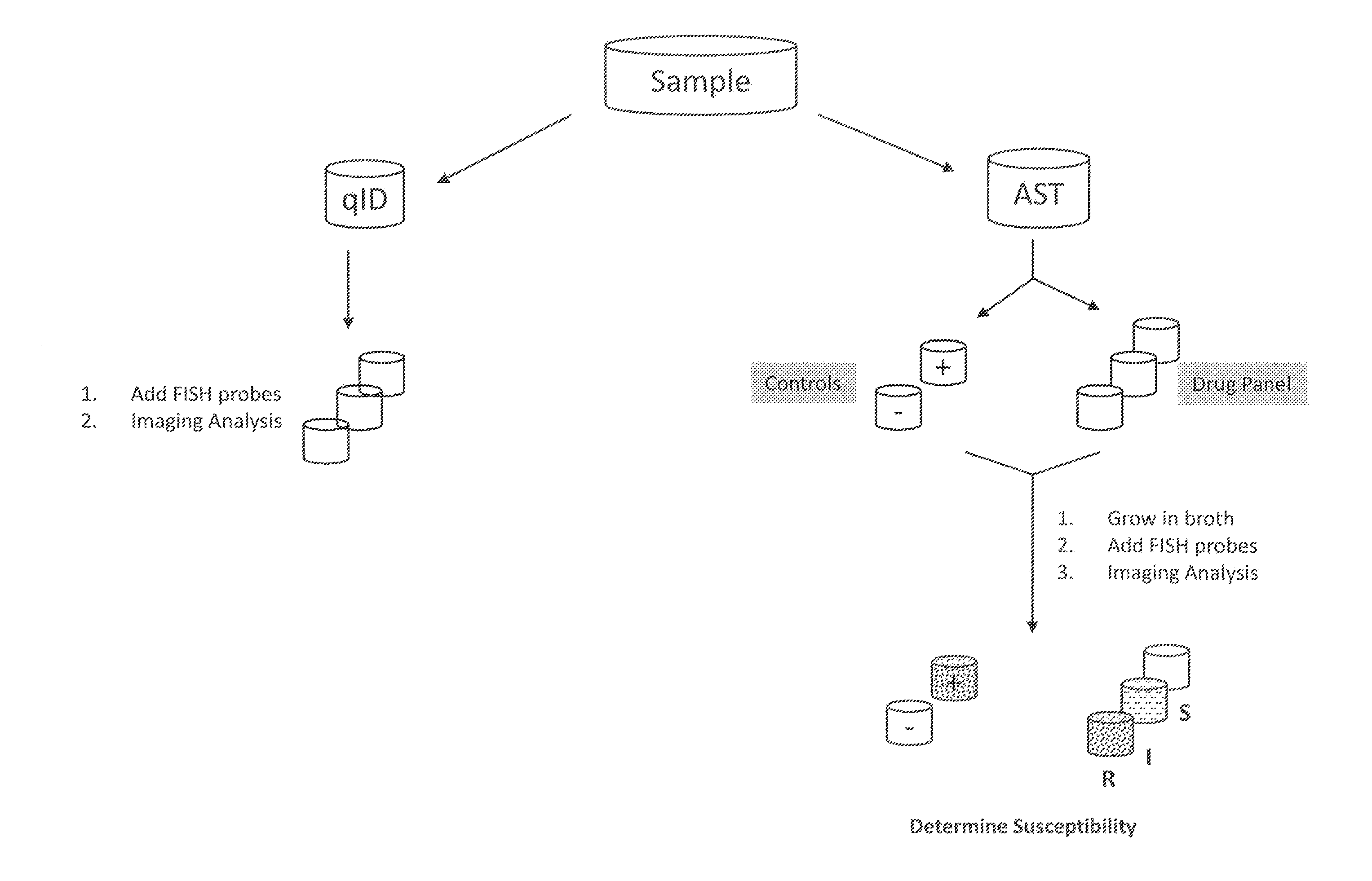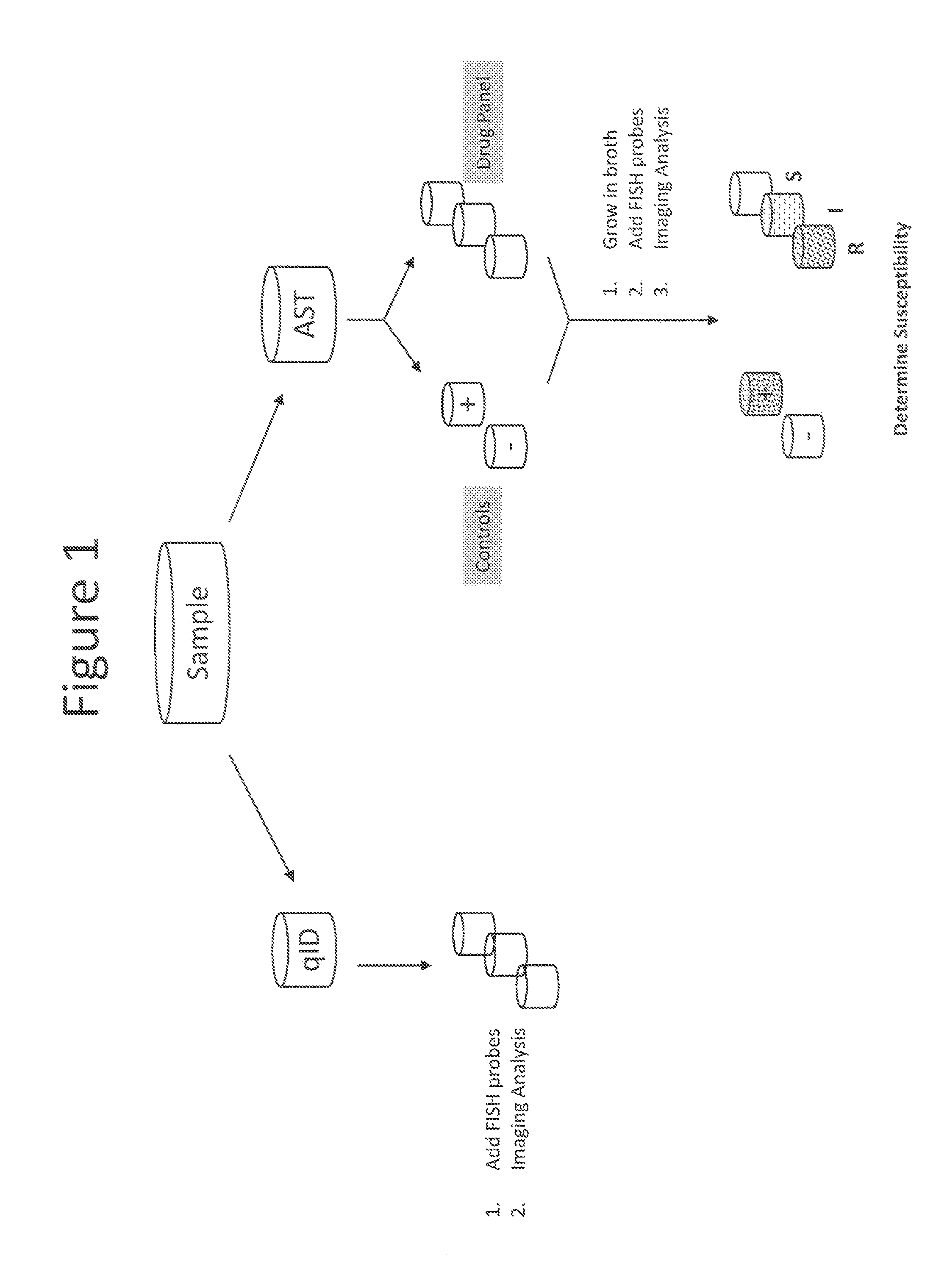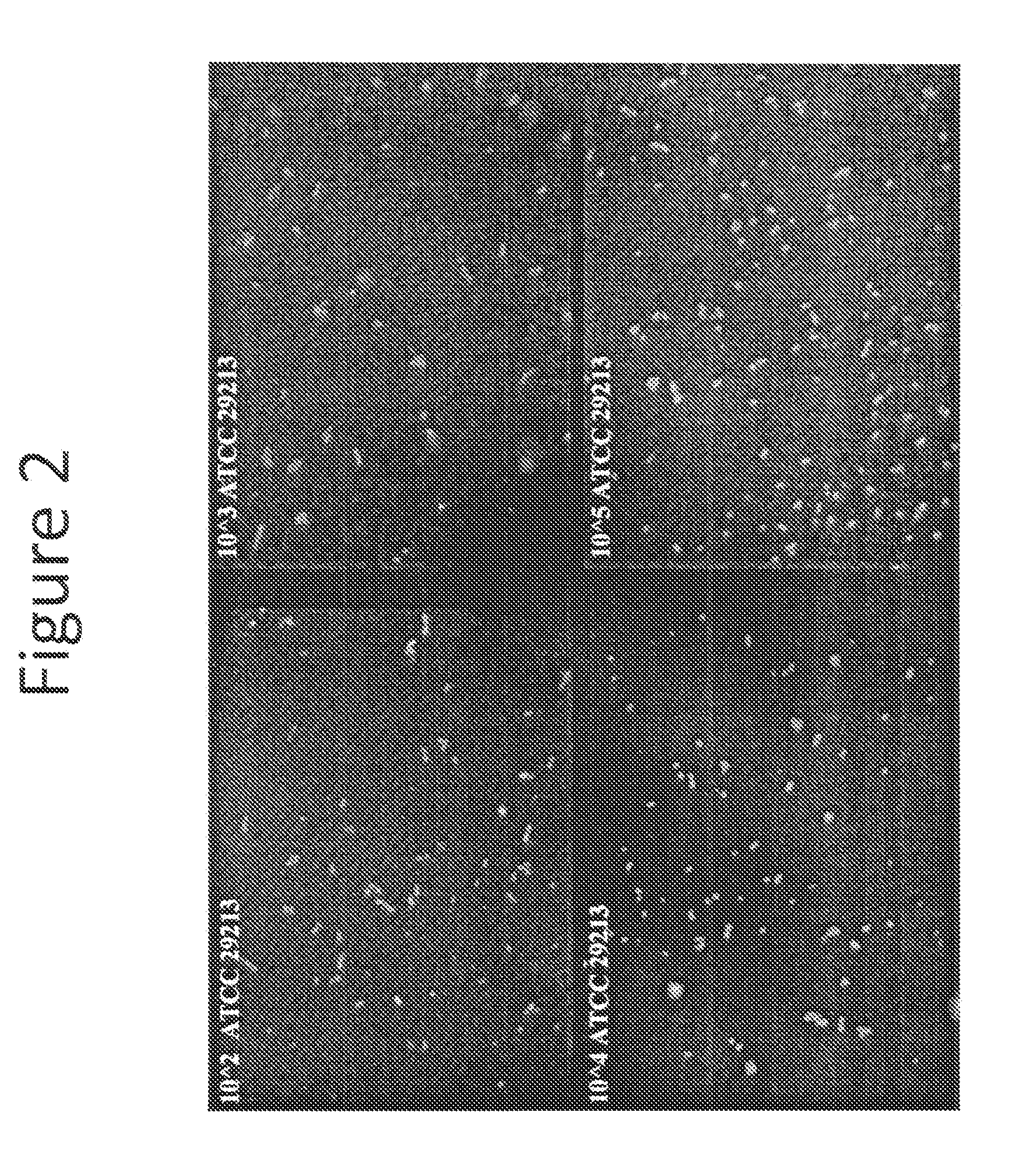Antibiotice Susceptibility Profiling Methods
a susceptibility profiling and antibiotic technology, applied in the field of new microorganism identification and antibiotic susceptibility testing, can solve the problem of difficult application of fda-approved tests directly to clinical specimens
- Summary
- Abstract
- Description
- Claims
- Application Information
AI Technical Summary
Benefits of technology
Problems solved by technology
Method used
Image
Examples
example 1
[0065]Introduction
[0066]This experiment discloses a PNA FISH test using peptide nucleic acid probes, filter membranes, and fluorescence microscopy for the rapid and accurate detection and identification of S. aureus infections. The test results showed that the filter membrane PNA-FISH system can detect as low as 102 CFU / ml S. aureus with pure culture. The results also indicate that the method can distinguish methicillin-resistant S. aureus (MRSA) from wild type S. aureus following the incubation with Oxacillin at concentration of greater than 2.0 ug / mL.
[0067]Equipment[0068]Water bath set to 55° C.±1° C. (Advandx Catalog No. AC006)[0069]Staining dish with cover and slide holder (Advandx Catalog No. AC004)[0070]Fluorescence microscope (Nikon TI)[0071]Flow-through device
[0072]Materials[0073]S. aureus ATCC 29213 (wild type)[0074]S. aureus POS 3663 (MRSA)[0075]1.5 ml microcentrifuge tubes[0076]Phoenix ID® broth and AST® broth[0077]S. aureus PNA FISH Kit (Advandx Catalog No. KT001)[0078]P...
PUM
| Property | Measurement | Unit |
|---|---|---|
| Concentration | aaaaa | aaaaa |
| Electrical resistance | aaaaa | aaaaa |
| Minimum inhibitory concentration | aaaaa | aaaaa |
Abstract
Description
Claims
Application Information
 Login to View More
Login to View More - R&D
- Intellectual Property
- Life Sciences
- Materials
- Tech Scout
- Unparalleled Data Quality
- Higher Quality Content
- 60% Fewer Hallucinations
Browse by: Latest US Patents, China's latest patents, Technical Efficacy Thesaurus, Application Domain, Technology Topic, Popular Technical Reports.
© 2025 PatSnap. All rights reserved.Legal|Privacy policy|Modern Slavery Act Transparency Statement|Sitemap|About US| Contact US: help@patsnap.com



